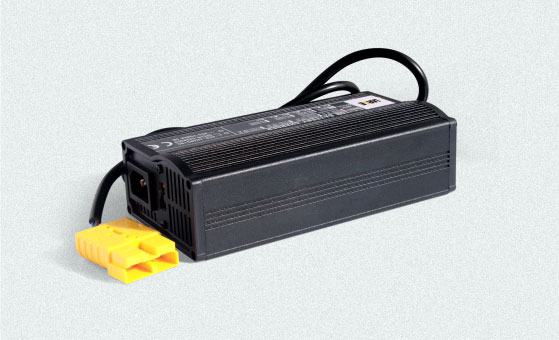Adopt special material and process.
Be suitable for cold environment.
-50℃ 0.2C discharge efficiency 80%
Ultra-high power cell
Super safe
High capacity energy storage
High energy density
High volumetric specific energy
High-rate discharge
High voltage platform
Large capacity, long cycle life
Environmental friendly
Outstanding safety
High thermal stability
Long cycle life
Nice cycle performance
Low cost
High energy density
In general, the single battery cell on the market is around 3.7V, but in many cases, the operating voltage range is a little bit larger. It is obvious that the voltage is not enough to use. At this time, the battery pack that can improve voltage and modular battery are coming. In many high-voltage batteries, 48V lithium ion battery has been widely used.
Compared with lead-acid battery, 48V lithium ion battery has advantages of small size, light weight, outstanding temperature adaptability, high charging and discharging efficiency, good safety and stability, long service life, energy saving and environmental protection.
According to the anode material, 48V lithium ion battery can be divided into ternary lithium battery, lithium iron phosphate battery, lithium titanate battery.
A 48V lithium ion battery is connected by multiple lithium cells in series and parallel. If a single cell is a 48V lithium battery, the efficiency and life of the battery will be not so good.
Generally, the voltage of a single lithium cell is 3.6-3.7V, and its price will vary due to the different materials and processes used by lithium battery manufacturers.
48V Lithium Ion Battery Pack Model Table
| Type | Battery Specification | Cell Model | Connection Modes | Dimension(mm) | Weight(Kg) |
| Lithium Iron Phosphate | 48v 10ah | 26650/3.2V/10Ah | 26650-15S3P | 245×145×90 | 5.0 |
| 48v 14ah | 26650/3.2V/3.5Ah | 26650-15S4P | 290×175×75 | 5.5 | |
| 48v 20ah | LA148F20C/3.2V/20Ah | LA148F20C-15S1P | 470×350×90 | 16.0 | |
| 48v 25ah | 26650/3.2V/3200mAh | 26650-15S8P | 300×250×150 | 16.0 | |
| 48v 28ah | 26650/3.2V/3.5Ah | 26650-15S8P | 530×235×133 | 16.0 | |
| 48v 40ah | 26650/3.2V/3.3Ah | 26650-15S12P | 420×265×140 | 35.0 | |
| 48v 50ah | 26650/3.2V/3.2Ah | 26650-15S16P | 451×415×133 | 30.0 | |
| 48v 100ah | 26650/3.2V/3.3Ah | 26650-15S34P | 620×325×240 | 55.0 | |
| Ternary | 48v 12ah | 18650/3.6V/3.5Ah | 18650-13S3P | 160×140×65 | 2.0 |
| 48v 60ah | 18650/3.6V/3.35Ah | 18650-13S18P | 300×270×155 | 15.0 | |
| 48v 80ah | 18650/3.6V/3.35Ah | 18650-13S24P | 400×400×100 | 20.0 |
48V 10Ah LiFePO4 Battery for Detection Equipment Power Supply Nominal voltage:48.0V Nominal capacity:10Ah Dimension:245×145×90mm
48V 20Ah LiFePO4 Battery for Switching Power Supply Nominal voltage:48.0V Nominal capacity:20Ah Battery cell:LiFePO4 LA148F20C/3.2V/20Ah Dimension:470*350*90mm(Max)
48V 100Ah 26650 AGV LiFePO4 Battery Nominal voltage:48.0V Nominal capacity:100Ah Battery cell:26650/3.2V/3300mAh Dimension:620*325*240mm
A 48V lithium ion battery charger is designed to charge a lithium ion battery at a nominal voltage of 48V. Lithium ion battery has a high requirement on charger and needs protection circuit. Therefore, lithium ion battery charger usually has a high control precision and can charge lithium ion battery at constant current and constant voltage.
Li-ion battery charger has overvoltage protection and temperature protection. It is externally connected with current-limiting type charging power supply and P-channel mosfet, which can carry out safe and effective quick charging for single li-ion battery cell. The biggest characteristic is that it can achieve very low power dissipation without inductance. It has 8-pin μMAX package. The charging control precision reaches 0.75%, which can realize pre-charging. The maximum charging time limit provides secondary protection for lithium ion battery. The floating charging mode of lithium ion battery charger can maximize the battery capacity.

48V lithium ion battery PCM is the protection of the circuit board. It is mainly composed of electronic circuits, and accurately monitor the cell voltage, the charging and discharging circuit current at -40℃ to +85℃ at all times to timely control the current circuit on and off.
The lithium ion battery PCM can play the role of charging and discharging protection for the series and parallel connection battery packs, and can detect the overvoltage, overcurrent, over temperature, under voltage and short circuit state of each single battery cell in the battery pack, so as to extend the service life and avoid damage due to over discharge. The PCM is an indispensable part of lithium ion battery.
48V lithium ion battery management system (BMS) determines the status of the battery system by detecting the state of each lithium ion battery cell, and improves strategy implementation according to battery status, so as to ensure that the lithium ion battery charging and discharging management system operates safely and stably.


48V lithium ion battery life is related to capacity of the battery (Ah) and electric motor power (W). Now electric bicycle on the market with national standards normally use 48V 12Ah lithium ion battery and 350W motor. As the technical development of the battery, they can range up to 50 km, and the actual life depends on the weight of passenger and carrier.
How many kilometers a 48V lithium ion battery can run at full power depend on battery capacity, motor power, and load. In general, a 48V 12Ah, 350W lithium ion battery can run 50km. 48V 20Ah battery can run 70km. A 72V 22Ah lithium ion battery can run 90km.
Charging time has little to do with voltage;
It is related to the capacity of the lithium ion battery and the power of the charger, charging time = lithium ion battery capacity ÷ charging current
For example, 48V 20Ah lithium ion battery uses a normal 48V 2A charger, so the theoretical charging time is 2 hours, that is, 20Ah÷10A=2h, but in practice, constant current change to constant voltage mode during charging. The last trickle charging takes a long time. It usually takes about 3 hours. Similarly, using 48V 5A charger requires 20Ah÷5A=4h, but it has trickle charging time, too. It is about 5 hours.